-
 Bitcoin
Bitcoin $118600
-1.16% -
 Ethereum
Ethereum $3616
-2.94% -
 XRP
XRP $3.174
-10.23% -
 Tether USDt
Tether USDt $1.000
0.01% -
 BNB
BNB $773.4
-0.42% -
 Solana
Solana $189.3
-6.58% -
 USDC
USDC $1.000
0.02% -
 Dogecoin
Dogecoin $0.2406
-10.24% -
 TRON
TRON $0.3098
-1.24% -
 Cardano
Cardano $0.8139
-9.10% -
 Hyperliquid
Hyperliquid $44.01
-2.71% -
 Stellar
Stellar $0.4266
-9.64% -
 Sui
Sui $3.699
-7.29% -
 Chainlink
Chainlink $18.21
-6.60% -
 Hedera
Hedera $0.2465
-9.46% -
 Bitcoin Cash
Bitcoin Cash $512.3
-2.27% -
 Avalanche
Avalanche $24.03
-5.62% -
 Litecoin
Litecoin $112.2
-5.21% -
 UNUS SED LEO
UNUS SED LEO $8.964
-0.26% -
 Shiba Inu
Shiba Inu $0.00001386
-9.81% -
 Toncoin
Toncoin $3.188
-4.76% -
 Ethena USDe
Ethena USDe $1.001
-0.02% -
 Polkadot
Polkadot $4.135
-7.84% -
 Uniswap
Uniswap $10.16
-5.19% -
 Monero
Monero $310.5
-2.84% -
 Bitget Token
Bitget Token $4.702
-2.53% -
 Dai
Dai $0.0000
0.01% -
 Pepe
Pepe $0.00001270
-9.07% -
 Aave
Aave $290.7
-5.84% -
 Bittensor
Bittensor $424.7
-5.28%
How to arrange after the Bollinger Bands close to the narrowest range in the past six months?
When Bollinger Bands contract to their narrowest in six months, it signals low volatility and often precedes a significant price breakout in cryptocurrencies like Bitcoin or Ethereum.
Jun 29, 2025 at 06:21 am
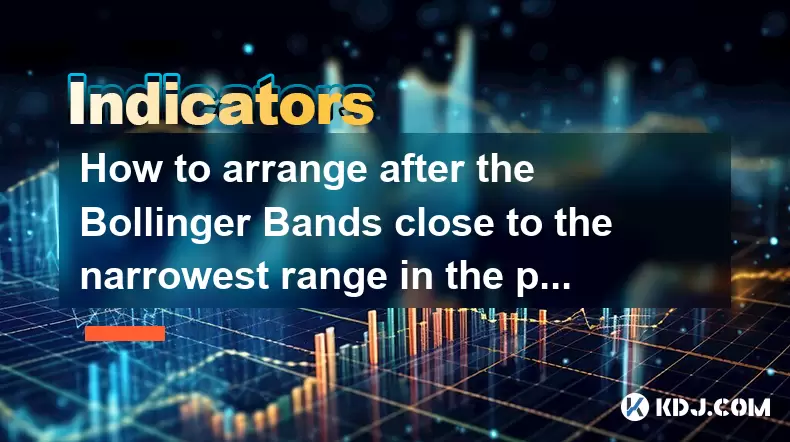
Understanding Bollinger Bands and Their Behavior
Bollinger Bands are a widely used technical analysis tool in the cryptocurrency trading community. They consist of a 20-period moving average with two standard deviation bands plotted above and below it. These bands dynamically adjust to price volatility, expanding during periods of high volatility and contracting when volatility decreases. When the bands contract to their narrowest range in six months, this often signals a potential breakout or sharp price movement.
Traders must understand that this contraction indicates low volatility, which historically precedes significant market moves. In the context of cryptocurrencies like Bitcoin or Ethereum, where price swings are common, identifying these moments can offer strategic entry or exit points.
Identifying the Narrowest Range Scenario
To determine whether the current Bollinger Band width is at its narrowest point in the last six months, traders need to calculate the band width as a percentage of the middle band (the 20-day simple moving average). This involves:
- Fetching historical price data for the past six months.
- Calculating the upper and lower bands for each day using the standard formula:
Upper Band = SMA + (2 × Standard Deviation)Lower Band = SMA - (2 × Standard Deviation) - Measuring the difference between the upper and lower bands for each period.
- Expressing this difference as a percentage of the SMA to normalize across different price levels.
- Comparing today’s band width with the previous 180 days’ values to confirm if it's indeed the narrowest.
Once confirmed, traders should prepare for a potential volatility expansion, which could manifest as a strong trend continuation or reversal depending on other market factors.
Evaluating Market Context Before Acting
Before making any decisions based solely on Bollinger Band compression, it's essential to evaluate the broader market environment. Cryptocurrency markets are highly sensitive to news, macroeconomic data, and regulatory changes. A narrowing Bollinger Band may coincide with a major event such as:
- A Federal Reserve interest rate decision
- A significant regulatory announcement
- A major exchange listing or delisting
- A known whale transaction or large-scale on-chain movement
These external catalysts can heavily influence how the price reacts once the band breaks. Ignoring them might lead to premature entries or misjudged exits. Therefore, cross-referencing with news feeds, on-chain analytics, and volume patterns becomes crucial.
Trading Strategies During Bollinger Band Contraction
When Bollinger Bands reach their narrowest in six months, several strategies can be applied depending on the trader's risk appetite and time horizon.
One popular approach is the breakout strategy, where traders place orders just beyond the upper or lower bands. The idea is that once the price breaches one of these boundaries, a strong move follows in that direction.
Another method is the mean reversion strategy, which assumes that after a long period of low volatility, the price will remain range-bound. Traders using this approach may look to buy near the lower band and sell near the upper band within the compressed range.
For more advanced users, combining Bollinger Bands with volume indicators like OBV (On-Balance Volume) or momentum oscillators like RSI or MACD can provide confirmation signals before entering a trade.
Here are some steps traders can follow:
- Monitor the band width percentage daily.
- Set up alerts when the band width hits a new six-month minimum.
- Use candlestick patterns to gauge possible reversal or continuation signals.
- Wait for a convincing close outside the band before entering a breakout trade.
- Consider placing stop-loss orders just beyond the opposite band to manage risk.
Each of these steps should be backtested against historical data to ensure consistency and reliability.
Risk Management Techniques for Volatility Breakouts
Volatility expansions following Bollinger Band compression can be sudden and aggressive. Without proper risk controls, even accurate predictions can result in losses due to slippage or unexpected reversals.
One key aspect is position sizing. Traders should only allocate a small portion of their portfolio—typically 1% to 5%—to any single trade. This helps mitigate the impact of false breakouts or whipsaws.
Another critical component is stop-loss placement. Given the unpredictable nature of crypto markets, stops should not be too tight, which may get triggered by normal price noise, nor too wide, which exposes capital unnecessarily.
Using trailing stops can also help protect profits during extended moves. For example, if a breakout leads to a rapid price surge, a trailing stop adjusts upward (or downward) to lock in gains while still allowing room for natural price fluctuations.
Lastly, always keep an eye on order book depth and liquidity levels. Thin order books during low volatility phases can lead to erratic price action once a breakout occurs.
Frequently Asked Questions
Q: What does it mean when Bollinger Bands stay narrow for a long time?
A: Prolonged narrowness in Bollinger Bands typically indicates very low volatility, which often precedes a significant price movement. In crypto markets, this can lead to explosive moves once the consolidation phase ends.
Q: Can I use Bollinger Bands alone to make trading decisions?
A: While Bollinger Bands are powerful, relying solely on them increases the risk of false signals. It's best to combine them with other tools such as volume indicators, support/resistance levels, or sentiment analysis.
Q: How often do Bollinger Bands compress to their narrowest in six months?
A: In highly volatile assets like cryptocurrencies, this pattern may occur every few months, especially during sideways market conditions. However, the significance lies in the context surrounding the contraction, including volume and upcoming events.
Q: Should I trade immediately when the bands reach their narrowest point?
A: No. It's generally safer to wait for a confirmed breakout or breakdown before entering a position. Premature entries can lead to losses if the price remains range-bound longer than expected.
Disclaimer:info@kdj.com
The information provided is not trading advice. kdj.com does not assume any responsibility for any investments made based on the information provided in this article. Cryptocurrencies are highly volatile and it is highly recommended that you invest with caution after thorough research!
If you believe that the content used on this website infringes your copyright, please contact us immediately (info@kdj.com) and we will delete it promptly.
- Score Big This Season with the BetMGM Bonus Code: Your Ticket to MLB Bonus Bets!
- 2025-07-24 06:50:12
- Bitcoin: From Digital Gold Rush to Evolving Asset Class
- 2025-07-24 06:50:12
- Shiba Inu's $1 Dream: Major Hurdles and Community-Driven Hope
- 2025-07-24 06:30:13
- Ethereum, Altcoins, and BlockDAG: Navigating the Crypto Landscape
- 2025-07-24 06:30:13
- Dogecoin's Resistance Retest: Parabolic Move on the Horizon?
- 2025-07-24 04:50:13
- WLFI, Vaulta Token, and Holdings: Navigating the Web3 Revolution
- 2025-07-24 05:30:13
Related knowledge
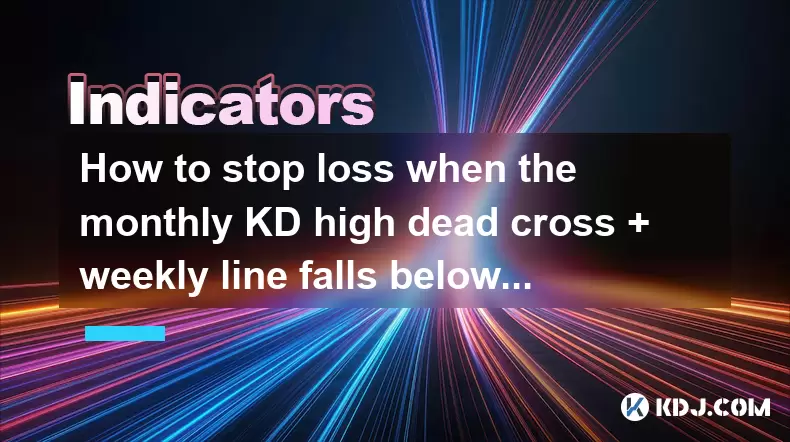
How to stop loss when the monthly KD high dead cross + weekly line falls below the 20-week line + daily line pulls back on the 5-day line?
Jul 24,2025 at 07:00am
Understanding the Indicators: KD, Weekly, and Daily Moving AveragesWhen traders analyze cryptocurrency price movements, they often rely on technical i...
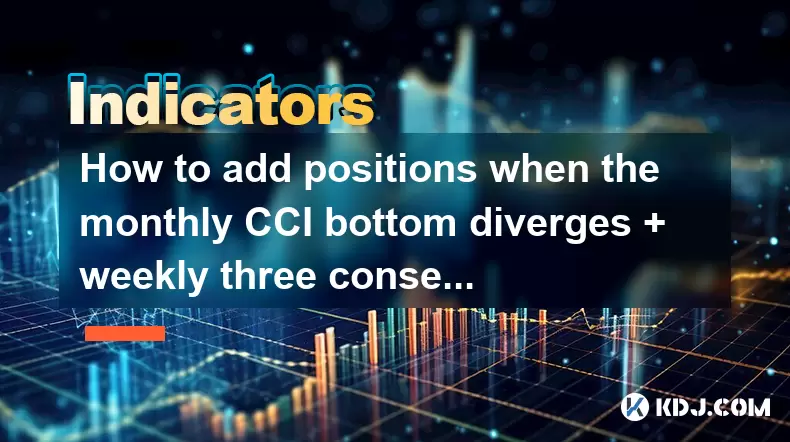
How to add positions when the monthly CCI bottom diverges + weekly three consecutive Yang + daily line gap is not filled?
Jul 24,2025 at 05:22am
Understanding the Monthly CCI Bottom DivergenceWhen analyzing the monthly CCI bottom divergence, traders are identifying a potential reversal signal i...
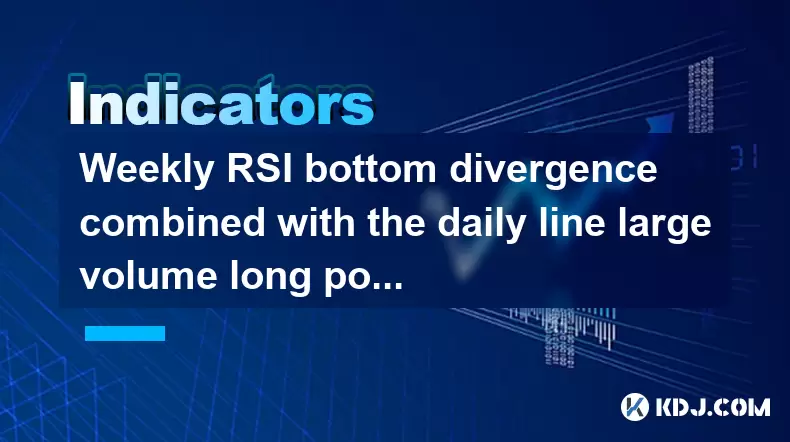
Weekly RSI bottom divergence combined with the daily line large volume long positive start signal
Jul 24,2025 at 05:28am
Understanding RSI Bottom Divergence in Cryptocurrency TradingIn the context of cryptocurrency trading, RSI bottom divergence is a powerful technical s...
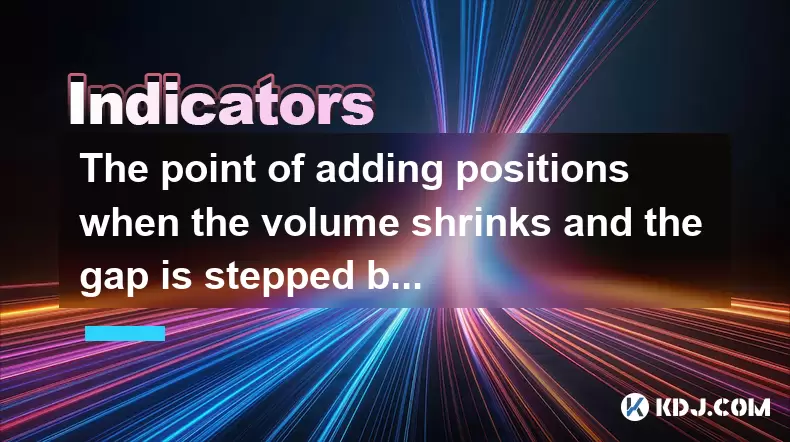
The point of adding positions when the volume shrinks and the gap is stepped back after the gap is jumped
Jul 24,2025 at 04:56am
Understanding the Gap Jump Phenomenon in Cryptocurrency TradingIn cryptocurrency trading, a gap jump occurs when the price of a digital asset opens si...
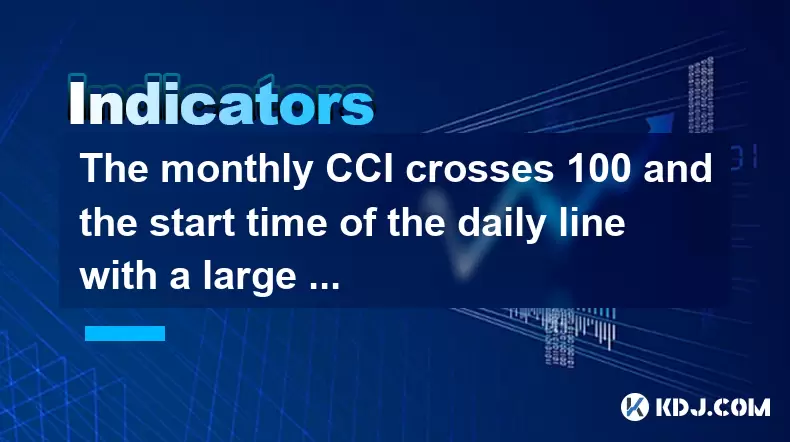
The monthly CCI crosses 100 and the start time of the daily line with a large volume positive line
Jul 24,2025 at 03:56am
Understanding the Monthly CCI Indicator and Its Significance at 100The Commodity Channel Index (CCI) is a momentum-based oscillator used to identify o...
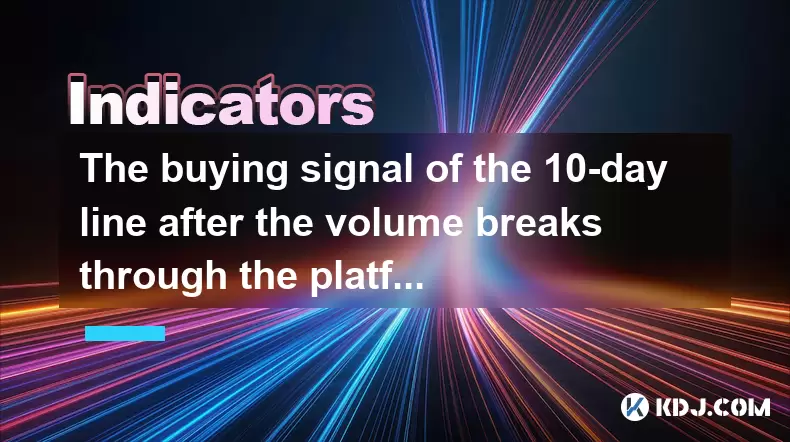
The buying signal of the 10-day line after the volume breaks through the platform
Jul 24,2025 at 06:00am
Understanding the 10-Day Moving Average in Cryptocurrency TradingIn cryptocurrency trading, moving averages are essential tools for identifying trends...

How to stop loss when the monthly KD high dead cross + weekly line falls below the 20-week line + daily line pulls back on the 5-day line?
Jul 24,2025 at 07:00am
Understanding the Indicators: KD, Weekly, and Daily Moving AveragesWhen traders analyze cryptocurrency price movements, they often rely on technical i...

How to add positions when the monthly CCI bottom diverges + weekly three consecutive Yang + daily line gap is not filled?
Jul 24,2025 at 05:22am
Understanding the Monthly CCI Bottom DivergenceWhen analyzing the monthly CCI bottom divergence, traders are identifying a potential reversal signal i...

Weekly RSI bottom divergence combined with the daily line large volume long positive start signal
Jul 24,2025 at 05:28am
Understanding RSI Bottom Divergence in Cryptocurrency TradingIn the context of cryptocurrency trading, RSI bottom divergence is a powerful technical s...

The point of adding positions when the volume shrinks and the gap is stepped back after the gap is jumped
Jul 24,2025 at 04:56am
Understanding the Gap Jump Phenomenon in Cryptocurrency TradingIn cryptocurrency trading, a gap jump occurs when the price of a digital asset opens si...

The monthly CCI crosses 100 and the start time of the daily line with a large volume positive line
Jul 24,2025 at 03:56am
Understanding the Monthly CCI Indicator and Its Significance at 100The Commodity Channel Index (CCI) is a momentum-based oscillator used to identify o...

The buying signal of the 10-day line after the volume breaks through the platform
Jul 24,2025 at 06:00am
Understanding the 10-Day Moving Average in Cryptocurrency TradingIn cryptocurrency trading, moving averages are essential tools for identifying trends...
See all articles

























































































